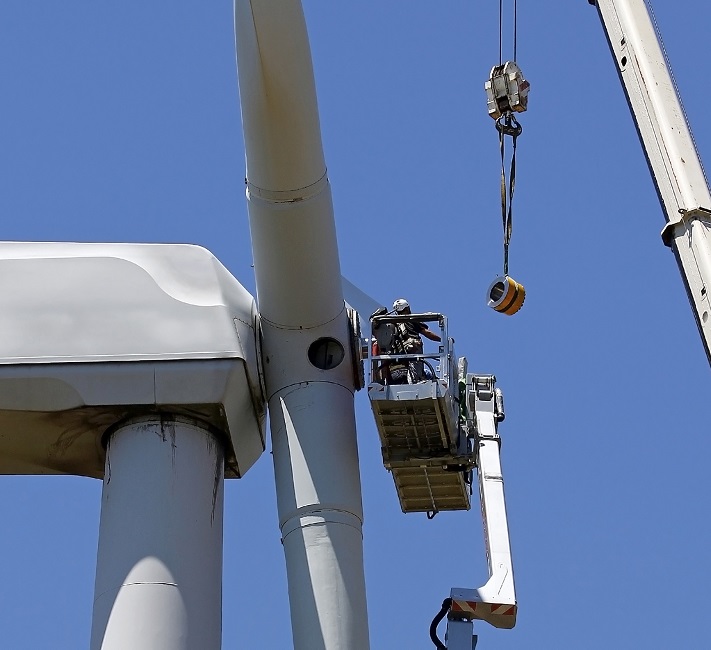US wind O&M costs estimated at $48,000/MW; Falling costs create new industrial uses: IEA
Our pick of the latest wind power news you need to know.

Related Articles
Average US wind O&M costs estimated at $48,000/MW
The median operations and maintenance (O&M) cost for a U.S. utility-scale wind farm with a full wrap guarantee was just over $48,000/MW in 2016 and the average age of installed turbines is now around six years, IHS Markit said in a new report.
O&M costs average between $42,000 and $48,000/MW during the first 10 years of a wind turbine’s operations, IHS Markit said. However, costs vary widely depending on age, location and O&M strategy.
U.S. wind farm owners are expected to spend over $40 billion on O&M over the next 10 years, the report said.
“The average age of the North American wind fleet will rise from 5.5 years in 2015 to 7 years in 2020, and to 14 years in 2030,” Maxwell Cohen, senior research analyst at IHS Markit and co-author of the report, said in a statement.
“Along with that, equipment maintenance and operating costs are increasing significantly, leading operators to focus on performance optimization and cost management," Cohen said.
The number of utility-scale wind turbines installed in the U.S. is forecast to rise from 50,000 currently to around 70,000 by 2030.
“The age of that capacity in 2030 will make the O&M business very lucrative, which is why so many players are expanding into this sector of the business,” Ryan Siavelis, senior research analyst at IHS Markit and co-author of the report, said.
“We see new entrants from across the value chain competing for wind O&M service agreements. Original equipment manufacturers (OEMs) including Suzlon, Siemens Gamesa, MHI and Vestas are becoming more active in offering to service turbines manufactured by other OEMs, for example,” he said.
Falling wind, solar costs create new industrial uses: IEA
Recent rapid falls in wind and solar power costs may enable new opportunities for reducing carbon emissions from industry, either through direct electricity supply or through the production of hydrogen (H)-rich chemicals and fuels, the IEA said in a new report 'Renewable Energy for Industry.'
Hydrogen rich chemicals and fuels could be produced in regions with abundant and cheap renewable energy resource and shipped to large consumption centres, "creating new types of international trade," Cedric Philibert, Senior Energy Analyst at IEA, said in a statement.
Production regions might include Australia, the Horn of Africa, North Africa, northern Chile, southern Peru, Patagonia and South Africa, as well as several regions in China and the U.S. Midwest, he said.
In addition to power generation for industrial uses, "green" hydrogen and ammonia could also reduce carbon dioxide emissions from iron and steel making, Philibert said.
"Hydrogen and ammonia could serve as energy carriers for other uses, notably in industrial furnaces and balancing power plants. Drop-in hydrocarbon fuels and many chemicals could also be produced associating green hydrogen and recycled carbon from fumes or the air," he said.
The IEA estimates such applications for wind and solar power would require "several terawatts" of additional wind and solar capacity.
"Overall, a combination of direct process electrification and use of storable hydrogen-rich chemicals and fuels manufactured from electricity may offer the greatest potential for renewables uptake by various industries," Philibert said.
Global energy storage market to hit 125 GW by 2030: BNEF
The global energy storage market will "double six times" between 2016 and 2030, rising to a total of 125 GW, or 305 GWh, Bloomberg New Energy Finance (BNEF) said in a new report.
"This is a similar trajectory to the remarkable expansion that the solar industry went through from 2000 to 2015, in which the share of photovoltaics as a percentage of total generation doubled seven times," BNEF said in a statement.
An estimated $103 billion will be invested in energy storage by 2030 and a quarter of storage projects will be deployed in the U.S., BNEF said. The other significant energy storage markets will be China, Japan, India, Germany, UK, Australia and South Korea, accounting for 70% of installations, it said.
Global cumulative storage deployment

Source: Bloomberg New Energy Finance (BNEF)
"Energy storage, both utility-scale and behind-the-meter, will be a crucial source of flexibility throughout this period and will be essential to integrating increasing levels of renewable energy," BNEF said.
New Energy Update
